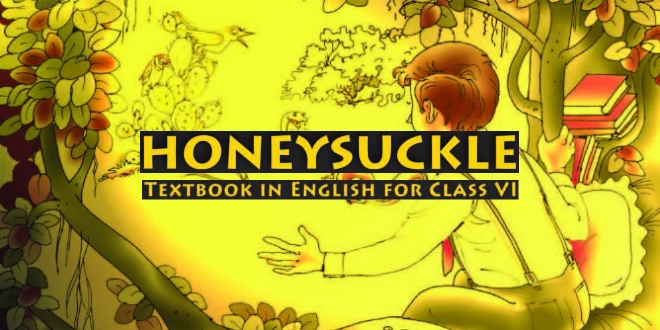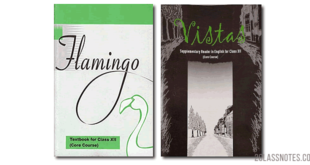The Banyan Tree: NCERT 6th CBSE Honeysuckle English Chapter 10
The Banyan Tree – Question: A. Complete the following sentences.
- The old banyan tree “did not belong” to grandfather, but only to the boy, because
_________________ _________________ _________________ _________________ _________________ - The small gray squirrel became friendly when
_________________ _________________ _________________ _________________ _________________ - When the boy started to bring him pieces of cake and biscuit, the squirrel
_________________ _________________ _________________ _________________ _________________ - In the spring, the banyan tree _________________ , and _________________ would come there.
- The banyan tree served the boy as a
_________________ _________________ _________________ _________________ _________________ - 6. The young boy spent his afternoons in the tree
_________________ _________________ _________________ _________________ _________________
Answer:
- The old banyan tree “did not belong” to grandfather, but only to the boy, because the grandfather at sixty-five could no longer climb it.
- The small grey squirrel became friendly when he found that the boy did not arm himself with catapult or air-gun.
- When the boy started to bring him pieces of cake and biscuit, the squirrel grew quite bold and was soon taking morsels from the author’s hand.
- In the spring, the banyan tree was full of small red figs, and birds of all kind would come there.
- The banyan tree served the boy as a library.
- The young boy spent his afternoons in the tree when it was not too hot.
The Banyan Tree – Question: 1. “It was to be a battle of champions.”
(i) What qualities did the two champions have? Pick out words and phrases from the paragraph above this line in the text and write them down.
| Mongoose | Cobra |
| (a) ___________ | (a) ___________ |
| (b) ___________ | (b) ___________ |
| (c) ___________ | (c) ___________ |
(ii) What did the cobra and the mongoose do, to show their readiness for the fight?
2. Who were the other two spectators? What did they do? (Did they watch, or did they join in the fight?)
3. Read the descriptions below of what the snake did and what the mongoose did. Arrange their actions in the proper order.
- Ceased to struggle
- Tried to mesmerise the mongoose
- Coiled itself around the mongoose
- Struck the crow
- Struck again and missed
- Struck on the side that the mongoose pretended to attack
Grabbed the snake by the snout
Dragged the snake into the bushes
Darted away and bit the cobra on the back
Pretended to attack the cobra on one side
Refused to look into the snake’s eyes
Sprang aside, jumped in and bit
4.
- What happened to the crow in the end?
- What did the myna do finally?
Answer: 1.
(i)
| Mongoose | Cobra |
| (a) superb fighter | (a) skilful |
| (b) clever | (b) experienced |
| (c) aggressive | (c) swift |
(ii) To show its readiness for the fight, the cobra hissed defiance, its forked tongue darting in and out. It raised three of its six feet off the ground, and spread its broad, spectacled hood. The bushing of its tail and the standing up of the long hair on its spine showed that the mongoose was also ready for the fight.
2. The other two spectators were a crow and a myna. They settled on a cactus to watch the outcome. But they did not just watch. They tried to join the fight by hurling themselves at the cobra.
3.
Snake
(ii) Tried to mesmerise the mongoose
(vi) Struck on the side that the mongoose pretended to attack
(v) Struck again and missed
(iv) Struck the crow
(iii) Coiled itself around the mongoose
(i) Ceased to struggle
Mongoose
Refused to look into the snake’s eyes
Pretended to attack the cobra on one side
Sprang aside jumped in and bit
Darted away and bit the cobra on the back
Grabbed the snake by the snout
Dragged the snake into the bushes
4.
- In the end, the crow was flung nearly twenty feet across the garden by a blow from the cobra’s snout. The crow fluttered about for a while and then lay still.
- Finally, the myna dropped cautiously to the ground, hopped about, peered into the bushes from a safe distance, and then, with a shrill cry of congratulation, flew away.
The Banyan Tree – Question:
- The word ’round’ usually means a kind of shape. What is its meaning in the story?
- Find five words in the following paragraph, which are generally associated with trees. But here, they have been used differently. Underline the words.
Hari leaves for work at nine every morning. He works in the local branch of the firm of which his uncle is the owner. Hari’s success is really the fruit of his own labour. He is happy, but he has a small problem. The root cause of his problem is a stray dog near his office. The dog welcomes Hari with a loud bark every day.
Answer:
- In the story the word ’round’ means the different stages of the fight between the cobra and the mongoose.
- Leaves, branch, fruit, root and bark
Question: The words in the box are all words that describe movement. Use them to fill in the blanks in the sentences below.
dived gliding Sprang
darting whipped…back delving
- When he began to trust me, the squirrel began _________ into my pockets for morsels of cake.
- I saw a cobra ___________ out of a clump of cactus.
- The snake hissed, his forked tongue ____________ in and out.
- When the cobra tried to bite it, the mongoose _____________ aside.
- The snake _______________ his head ________________ to strike at the crow.
- The birds _______________ at the snake.
Answer:
- When he began to trust me, the squirrel began delving into my pockets for morsels of cake.
- I saw a cobra gliding out of a clump of trees.
- The snake hissed, his forked tongue darting in and out.
- When the cobra tried to bite it, the mongoose sprang aside.
- The snake whipped his head back to strike at the crow.
- The birds dived at the snake.
Question: Find words in the story, which show things striking violently against each other.
- The cobra struck the crow, his snout th _ _ _ing against its body.
- The crow and the myna c _ ll _ _ _ _ in mid-air.
- The birds dived at the snake, but b _ _ _ _ d into each other instead.
Answer:
- The cobra struck the crow, his snout thudding against its body.
- The crow and the myna collided in mid−air.
- The birds dived at the snake, but bumped into each other instead.
Question:
|
|
| ‘Would’ tells us what the author used to do, or what used to happen. | ‘Could’ tells us what the author was usually able to do, or grandfather is now not able to do. |
Choose would and could to replace the italicized words in the following sentences.
Grandfather says, in the old days,
- Elephants were able to fly in the sky, like clouds. They were also able to change their shapes. They used to fly behind clouds and frighten them. People used to look up at the sky in wonder.
- Because there was no electricity, he used to get up with the sun, and he used to go to bed with the sun, like the birds.
- Like the owl, he was able to see quite well in the dark. He was able to tell who was coming by listening to their footsteps.
Answer: Grandfather says, in the old days,
- Elephants could fly in the sky like clouds. They could change their shapes. They would fly behind clouds and frighten them. People would look up at the sky and wonder.
- Because there was no electricity, he would get up with the sun, and he would go to bed with the sun, like the birds.
- Like the owl, he could see quite well in the dark. He could tell who was coming by listening to their footsteps.
Question: Why did the speaker find the old banyan tree exclusively his own?
The Banyan Tree – Answer: The old banyan tree became the narrator’s own property because his grandfather was too old to climb it. ‘
Question: What did the speaker do while hiding himself in the banyan tree branches?
Answer: The author used to read storybooks and watch the world below.
Question: When did the banyan tree become a noisy place?
The Banyan Tree – Answer: The banyan tree became the noisiest place in the garden during the fig season.
Question: Where did the author usually spend his afternoons?
Answer: The author usually spent his afternoons on the platform he had built halfway up the tree.
Question: What exciting scene did the author enjoy from his platform in the banyan tree?
Answer: The author enjoyed the fight between a mongoose and a cobra, a battle of two champions.
Question: What trick did the mongoose apply to overpower and kill the cobra?
Answer: He first bit the snake twice on the back. When the cobra was tired, the mongoose caught it by the snout. He finally dragged the dead snake into the bushes.
Question: creatures lost their lives in the classic struggle between the cobra and the mongoose. Who were those victims?
Answer: The Cobra and the crow.
Question: What is the story The Banyan Tree about? Narrate the incident in brief.
Answer: The Banyan Tree is about a deadly fight between a mongoose and a snake. The outcome of such a fight is the death of the cobra. The mongoose is faster in movement than his opponent. The writer witnessed such a fight, sitting on a branch of a banyan tree. He enjoyed the fight. Both the mongoose and the cobra were experienced fighters. They could strike with speed. A myna and a crow also arrived to feed on the dead crew. The crow had hard luck. He was bitten and he fell dead. The cobra got tired in the fight and the mongoose dragged it into the bushes.
Question: Bring out the relevance / significance of the banyan tree in the title of Ruskin Bond‘s story.
The Banyan Tree – Answer: The banyan tree served as a platform for the writer to sit and watch the thrilling fight between a cobra and a wild mongoose. The tree was almost the speaker’s property because his grandfather could not climb it. The fight started under that tree in the sunshine. Two other spectators, a myna and a crow, also arrived to feed on the dead cobra. But they sat on a cactus plant, not the tree.
 Class Notes NCERT Solutions for CBSE Students
Class Notes NCERT Solutions for CBSE Students


